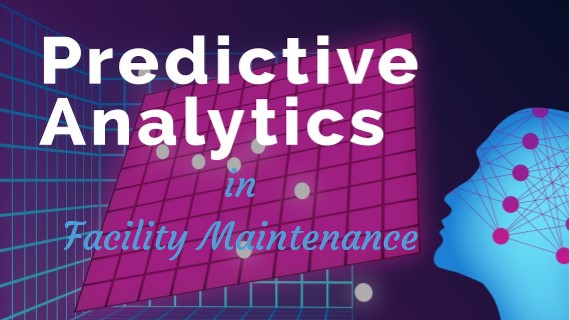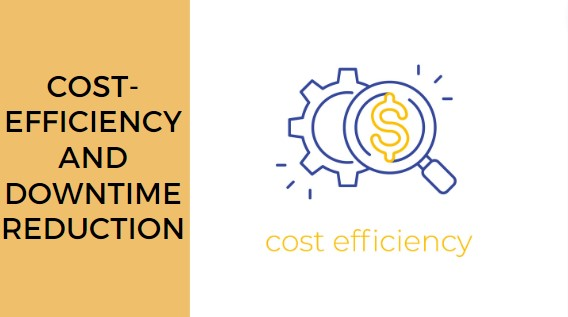
5 ways to leverage predictive analytics in facility maintenance
Madhurima Sanyal |
15 Feb 2024 |
17:46 PM
- Defining Predictive Analytics in Facility Maintenance
- Importance of Predictive Maintenance Strategy
- Understanding Data Analytics in Facility Management
- What is Data Analytics and Its Importance in FM?
- Benefits of Predictive Analytics in Facility Maintenance
- Overcoming Challenges in Data Analytics for Facility Management
- The Role of Predictive Data Analysis in Facility Management Software
- Conclusion

What is Breakdown Maintenance?
Pratik Lohiya 28 Feb 2024 | 07:41 AMDiscover the importance of breakdown maintenance strategies and proactive approaches like preventive maintenance to optimize equipment reliability and minimize costs. Explore how leveraging performance data and continuous improvement initiatives can e...
Predictive analytics plays a crucial role in modern facility maintenance by enabling predictive maintenance strategies. By leveraging data analytics and predictive maintenance software, organizations can enhance maintenance efficiency, minimize costs, and ensure the smooth operation of facilities.
In facility maintenance, staying ahead of potential issues is paramount to ensuring smooth operations and cost efficiency. One key tool in achieving this proactive approach is predictive analytics. Predictive analytics involves the use of historical and real-time data to forecast future events and trends, particularly in the context of maintenance needs and equipment performance.
Defining Predictive Analytics in Facility Maintenance

Predictive maintenance strategy harnesses the power of data to predict when equipment failure or maintenance issues are likely to occur. By analyzing patterns in historical data and real-time sensor data, predictive analytics systems can identify potential equipment failures before they happen. This allows maintenance teams to take preemptive action, such as scheduling maintenance tasks or replacing faulty components, before a breakdown occurs.
Importance of Predictive Maintenance Strategy
Predictive maintenance is a proactive approach that contrasts with traditional reactive maintenance, where repairs are made only after equipment failure. By implementing predictive maintenance strategies, organizations can reduce downtime, minimize disruptions to operations, and optimize maintenance schedules. This not only leads to cost savings by avoiding unexpected repairs and downtime but also enhances overall equipment reliability and longevity. Additionally, predictive maintenance contributes to a safer working environment by addressing potential safety hazards before they escalate.
Understanding Data Analytics in Facility Management

What is Data Analytics and Its Importance in FM?
Data analytics in FM refers to the process of collecting, organizing, and analyzing data from various sources within a facility to derive actionable insights. This data can include information on equipment performance, energy usage, maintenance records, and more. The importance of data analytics in FM lies in its ability to provide facility managers with valuable information to make informed decisions and drive improvements across various aspects of facility operations.
Types of Data Analytics:
Descriptive Analytics - Descriptive analytics focuses on summarizing historical data to provide insights into past events and trends. In the context of FM, descriptive analytics can help identify patterns in asset failures, maintenance tasks, and energy usage over time. By understanding past performance, facility managers can gain valuable insights into current operations and identify areas for improvement.
Diagnostic Analytics - Diagnostic analytics goes beyond describing past events to identify the root causes of problems or trends. In FM, diagnostic analytics can help facility managers understand why certain equipment failures occurred, what factors contributed to maintenance costs, and how to address underlying issues to prevent future problems.
Predictive Analytics - Predictive analytics leverages historical and real-time data to forecast future events or trends. In FM, predictive analytics can be used to anticipate equipment downtime, predict maintenance needs, and optimize maintenance schedules. By predicting potential issues before they occur, facility managers can proactively address maintenance activities, minimize downtime, and reduce costs.

Prescriptive Analytics - Prescriptive analytics takes predictive analytics a step further by recommending actions to optimize outcomes. In FM, prescriptive analytics can help facility managers determine the most effective maintenance strategies, prioritize tasks, and allocate resources efficiently. By combining predictive insights with prescriptive recommendations, facility managers can make data-driven decisions that lead to cost reduction, improved efficiency, and enhanced facility performance.
Benefits of Predictive Analytics in Facility Maintenance
Cost-Effectiveness of Predictive Maintenance

Predictive analytics in facility maintenance offers significant cost reduction by shifting from a reactive to a proactive approach. Traditional maintenance practices often lead to unexpected equipment failures, resulting in costly repairs and downtime. However, predictive maintenance allows organizations to anticipate maintenance needs based on historical data and predictive maintenance data.
By identifying potential equipment failures before they occur, organizations can schedule maintenance tasks during planned downtimes, avoiding costly disruptions to operations. Additionally, predictive maintenance minimizes the need for emergency repairs and extends the lifespan of equipment, reducing overall maintenance costs in the long run.
Enhanced Asset Data Accuracy

Predictive maintenance data analytics relies on accurate asset data to forecast potential failures and optimize maintenance schedules. Predictive analytics systems analyze historical data and raw data from sensors to identify patterns and trends in equipment performance. By ensuring the accuracy and integrity of asset data, organizations can make informed decisions regarding maintenance activities and resource allocation. This leads to more effective maintenance strategies, improved equipment reliability, and enhanced operational efficiency.
Downtime Elimination
One of the key benefits of predictive maintenance is the elimination of unplanned downtime. By proactively identifying and addressing potential equipment failures, organizations can minimize disruptions to operations and ensure continuous productivity. Predictive maintenance software alerts maintenance teams to impending issues, allowing them to take preemptive action before a breakdown occurs. As a result, downtime due to equipment failures is significantly reduced, leading to increased uptime and productivity.
Optimizing Workforce Productivity

Predictive maintenance enables organizations to optimize workforce productivity by streamlining tasks and resource allocation. By prioritizing maintenance activities based on predictive analytics insights, organizations can ensure that maintenance teams are deployed efficiently and effectively. This minimizes idle time and maximizes the productivity of maintenance personnel, ultimately leading to cost savings and improved operational efficiency.
Improving Customer Satisfaction Ratings
Predictive maintenance contributes to improved customer satisfaction ratings by reducing downtime and ensuring the reliability of facility assets. By proactively addressing maintenance needs, organizations can minimize disruptions to services and maintain a high level of customer satisfaction.
This enhances the overall customer experience and strengthens the reputation of the organization within the industry. Additionally, by optimizing maintenance strategies and minimizing costs, organizations can pass on the benefits to customers through competitive pricing and enhanced service offerings. Overall, predictive analytics in facility maintenance plays a crucial role in improving customer satisfaction ratings and driving business success.
Overcoming Challenges in Data Analytics for Facility Management
High Cost of Implementation
One of the primary challenges in implementing data analytics for facility management is the high cost associated with acquiring and implementing the necessary technology and infrastructure. Predictive analytics systems and software often require significant investment in terms of hardware, software licenses, and training for staff. Additionally, integrating data analytics systems with existing IT infrastructure can be complex and costly. However, despite the initial investment, organizations can realize long-term cost savings through improved maintenance strategies, reduced downtime, and enhanced operational efficiency.
Difficulty in Data Gathering and Understanding
Another challenge in data analytics for facility management is the difficulty in gathering and understanding relevant data. Facilities generate vast amounts of data from various sources, including sensors, equipment logs, maintenance records, and more. However, this data often exists in disparate systems and formats, making it challenging to aggregate and analyze effectively.
Furthermore, interpreting raw data and extracting actionable insights requires specialized skills and expertise. To overcome this challenge, organizations must invest in data management tools and processes to centralize and standardize data collection, as well as provide training for staff to enhance data literacy and analytical capabilities.
Potential for Data Breaches
Data security is a critical concern in facility management, especially when dealing with sensitive information such as maintenance records and equipment performance data. Predictive maintenance software and data analytics systems store and process large volumes of data, making them potential targets for cyberattacks and data breaches.

To mitigate this risk, organizations must implement robust cybersecurity measures, such as encryption, access controls, and regular security audits. Additionally, ensuring compliance with data protection regulations, is essential to safeguarding sensitive data and maintaining trust with stakeholders.
The Role of Predictive Data Analysis in Facility Management Software
Predictive data analysis plays a pivotal role in modern facility management software by revolutionizing how organizations approach maintenance strategies and operational efficiency.
Creating Sustainable Facilities
Predictive data analysis enables facility managers to adopt sustainable practices by optimizing resource usage and reducing environmental impact. By analyzing sensor data and historical trends, predictive models can identify opportunities for energy conservation, waste reduction, and resource optimization. This proactive approach to sustainability not only minimizes costs but also enhances the organization's reputation as a responsible corporate citizen.
Enhancing Operational Excellence
Facility management software empowered by predictive data analysis enables organizations to achieve operational excellence by optimizing maintenance strategies and streamlining workflows. By leveraging real-time data and predictive models, maintenance teams can prioritize tasks, schedule inspections, and allocate resources more efficiently. This proactive approach minimizes downtime, maximizes equipment uptime, and enhances overall operational efficiency.
Improving Asset Management
Predictive maintenance data analytics enhances asset management practices by providing insights into equipment health, lifecycle analysis, and maintenance needs. By collecting and analyzing data from various sources, including sensor data and historical records, facility management software can predict potential asset failures, optimize maintenance schedules, and extend equipment life cycles. This proactive approach ensures that assets are well-maintained, reliable, and optimized for performance.
Cost Reduction
Predictive data analysis contributes to cost reduction by minimizing unplanned downtime, optimizing maintenance schedules, and reducing maintenance costs. By identifying potential asset failures before they occur, organizations can avoid costly repairs, emergency maintenance, and disruptions to operations. Additionally, by optimizing maintenance strategies based on data-driven insights, organizations can minimize unnecessary expenses and maximize the return on investment in facility management software.
Enhancing Facility Visibility through Automation
Facility management software powered by predictive data analysis enhances facility visibility through automation by providing real-time insights into facility operations, equipment performance, and maintenance activities.
By collecting and analyzing data from various sources in real-time, including sensor data and maintenance records, organizations can gain a comprehensive view of facility operations and performance. This enhanced visibility enables proactive decision-making, timely interventions, and continuous improvement initiatives to optimize facility performance and meet organizational goals.
Conclusion
Predictive data analysis is revolutionizing facility management by optimizing maintenance strategies, enhancing operational efficiency, and streamlining asset management practices. By harnessing real-time data, predictive models, and automation, organizations can minimize downtime, reduce costs, and improve overall facility performance.
The proactive approach enabled by predictive analytics ensures sustainable facilities, operational excellence, and informed decision-making. As technology advances, the integration of predictive maintenance data analytics with Computerized Maintenance Management System (CMMS) will further empower organizations to stay ahead of maintenance needs, driving continuous improvement and ensuring the longevity of facility assets.